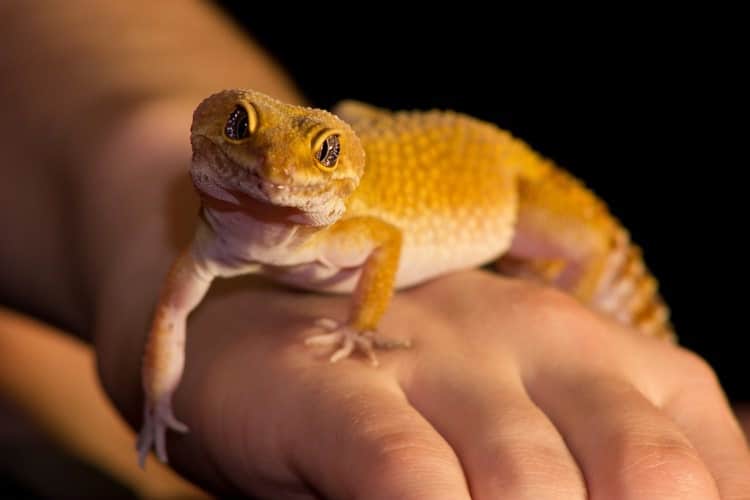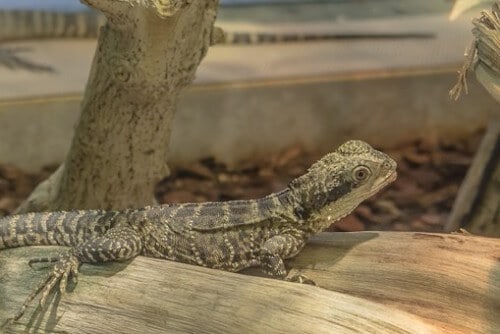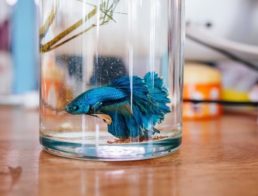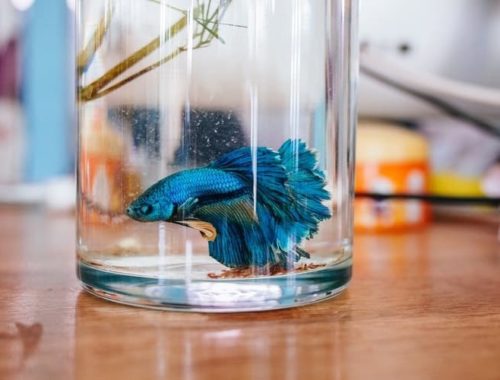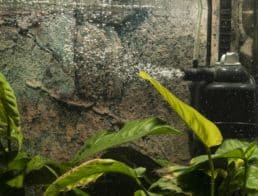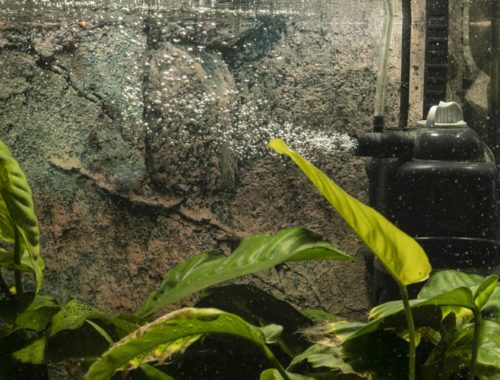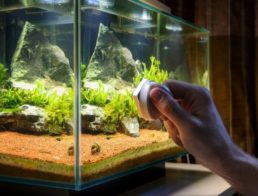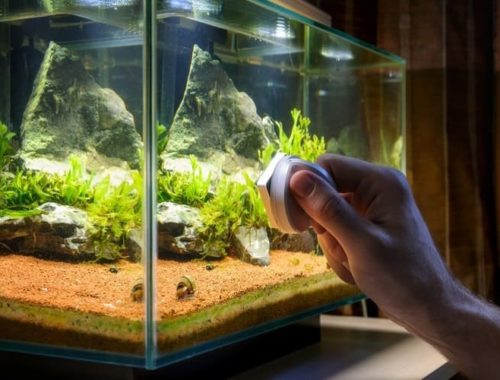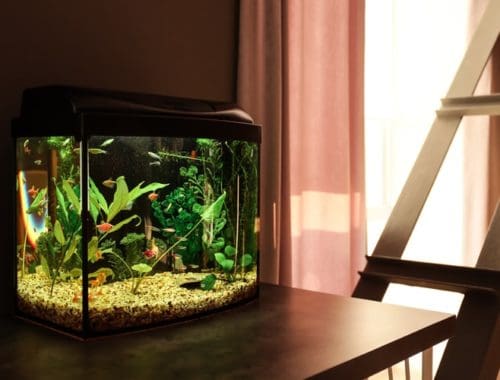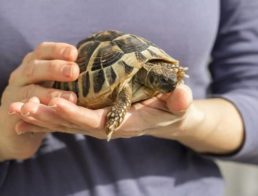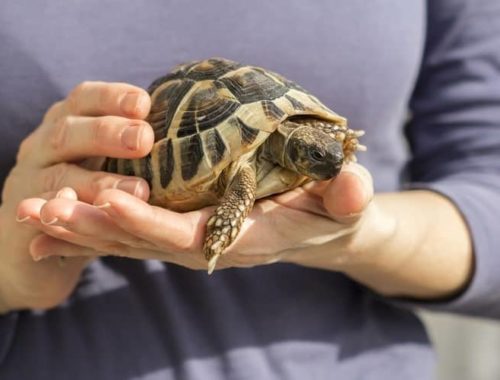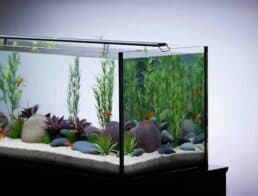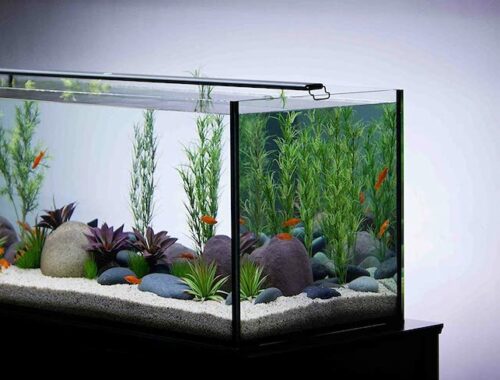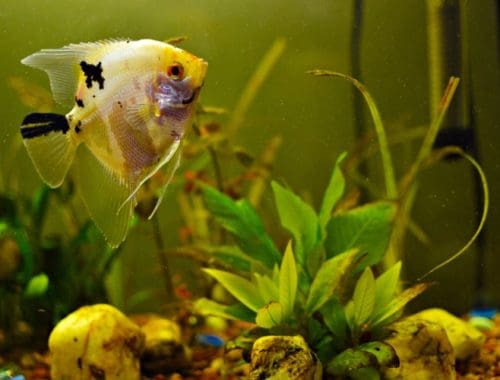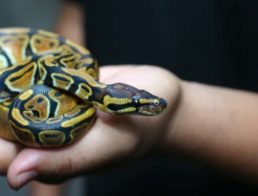Leopard geckos are docile lizards that make great pets for adults and children alike. They are easy to take care of and they can live up to 20 years, and to top it off, they are also quite attractive. They also don’t get very large; the biggest males might get up to 12 inches long, and most geckos will stay under 10 inches tall. All of these qualities have made them a popular pet. Check out this guide to learn how to take good care of your leopard gecko.
How to Set Up for Your Leopard Gecko
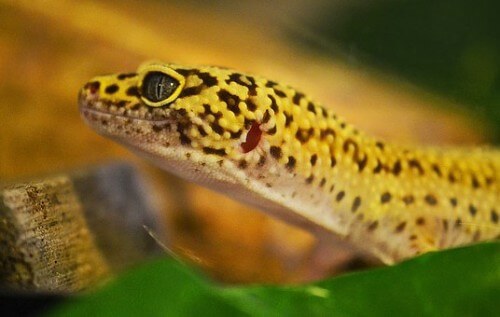
- Purchase an aquarium. One leopard gecko will live comfortably in a 10-gallon aquarium, but a 20-gallon tank will give her more room and is needed if you decide to get two geckos. Anything larger than that will get too cold for your new pet. Be sure the tank has a sturdy mesh top.
- Provide a hiding space. This is where your lizard will hide and also where she will shed her scales. You can purchase a hide box or you can make one out of a small cardboard box. Line it with moist moss.
- Get an under-tank heating pad. You will want to heat one side of the tank with an under-tank heating pad and leave the other side unheated so your pet can decide where she is most comfortable. The hide box should be in the warm section of the cage, and that should be maintained at 88 to 90 degrees Fahrenheit. The other side of the tank should not get below 73 degrees.
- Consider adding substrate and plants (real or fake). Do not use sand, soil, or anything else with fine particles. Good substrate materials for a leopard gecko are newspaper, pea gravel, and flat stones. You don’t have to use substrate at all; that is optional.
- Place a sturdy, shallow water dish in the tank. Your gecko should be able to climb in and out of it easily. Be sure that the water level is not too high, because it is important that the cage stays dry. If you notice any spilled water, wipe it up promptly.
How to Feed Your Leopard Gecko
- Feed your gecko mealworms or crickets. Like feeding and caring for a bearded dragon, a leopard gecko’s insects must be fed a nutritious powder prior to being given to your pet. Place the live mealworms and crickets in a container of chick or hog mash for 12 hours or longer. Also, place a slice of raw potato in the container so they have a source of water.
- Dust the fed insects with dusting powder. This allows your leopard gecko to consume the vitamins and nutrients that he needs. Be careful not to get the dust in his eyes.
- Offer your lizard two insects for every inch of length. Do this every other day. For example, if your gecko is 6 inches long, offer him 12 fed and dusted insects every other day.
- Make sure fresh water is available at all times. Serve it in a shallow bowl.
How to Pick Up Your Leopard Gecko
- Avoiding handling your leopard gecko until she is at least 6 inches long. If you need to move her before that, try to use a cup or some other method of scooping her up. Be gentle and be sure not to pinch her tail.
- Once she is big enough, devote 10 or 15 minutes per day to training her to trust you. Put her on the floor in a secure area and let her crawl over your hands. Within several days or a week, she will be tame and will allow you to pick her up easily.
- Do not pick her up by her tail. Leopard geckos will drop their tails and it takes over a month for them to regenerate a new one.
- Always wash your hands after handling your gecko. Use an antimicrobial soap. She has microorganisms on her skin that could potentially make you or other people sick.
How to Clean Your Leopard Gecko
- Don’t bathe your leopard gecko unnecessarily. In general, they do not need to be bathed unless they are very dirty, having trouble shedding their skin, or suffering from a skin malady that caused your veterinarian to recommend bathing.
- Place about 1/2″ of warm water in a shallow container. The water should be between 80 and 90 degrees.
- Add a drop of mineral oil or medication. If your lizard is having trouble shedding his skin, mineral oil will help soften the scales. If your pet has a fungal infection or another skin problem, your veterinarian might recommend betadine or some other medicated solution.
- Place your pet in the water. Gently pour the water over his back. Once he is fully wet, you can use a cotton ball or a soft washcloth to gently rub his skin. Don’t rub hard, and never try to pull off flakes of skin. If his skin is very flaky, you can lightly rub it with a soft toothbrush.
- Use a dry cloth or paper towel to dry your gecko. Again, rub gently, and don’t be too rough.
How to Clean Your Leopard Gecko’s Habitat
- Clean the bathroom area of your lizard’s tank daily. She will eliminate in one corner of the aquarium, so it will be easy to simply scoop out any solid waste with a small scoop. Also, remove any wet substrate.
- Clean and disinfect the tank weekly. First, take your gecko out of the tank and place her in a backup tank or some other container that she can’t escape from.
- Wash your hands. You can also wear disposable gloves if you want to.
- Remove everything from the tank. Throw out your used substrate and clean out the food and water dishes and any accessories. Be sure to rinse and dry everything thoroughly.
- Clean out the tank with hot, soapy water. If there is anything stuck to the glass, use a putty knife or a scrubber sponge to get it off.
- Use a lizard-safe disinfectant. Follow the manufacturer’s instructions.
- Be sure that everything is completely rinsed and dry before you put your leopard gecko back into the tank.
- Always wash your hands well with hot, soapy water after cleaning your lizard’s tank. If you used gloves, throw them away.
How to Tell If Your Leopard Gecko Is Happy and Healthy
- Read a good book about geckos. A comprehensive guide will tell you what to look for when it comes to your leopard gecko.
- Check your lizard’s skin. He will shed his skin and might look flaky; this is normal. If flakes are building up on his tail and around his toes, however, he might need a bath. If his skin looks abnormal, take him to a veterinarian who treats lizards.
- Pay attention to his eating habits. Is he eating the insects that you give him? If he skips a meal, try again the next day. If he skips more than one meal, contact your veterinarian.
- Pay attention to his bathroom habits. Your gecko will fall into a pattern for elimination. If he is not defecating as often as usual or if his feces are watery, contact a veterinarian.
- Interact with your gecko. Usually, leopard geckos are gentle and somewhat social. If your gecko is avoiding you when he is normally playful or if he becomes aggressive, he might be in pain.
With proper care, your female gecko should live between 6 and 10 years; males often live longer and some will live well into their 20s. They are a fun, low-maintenance pet that should bring you years of joy.


